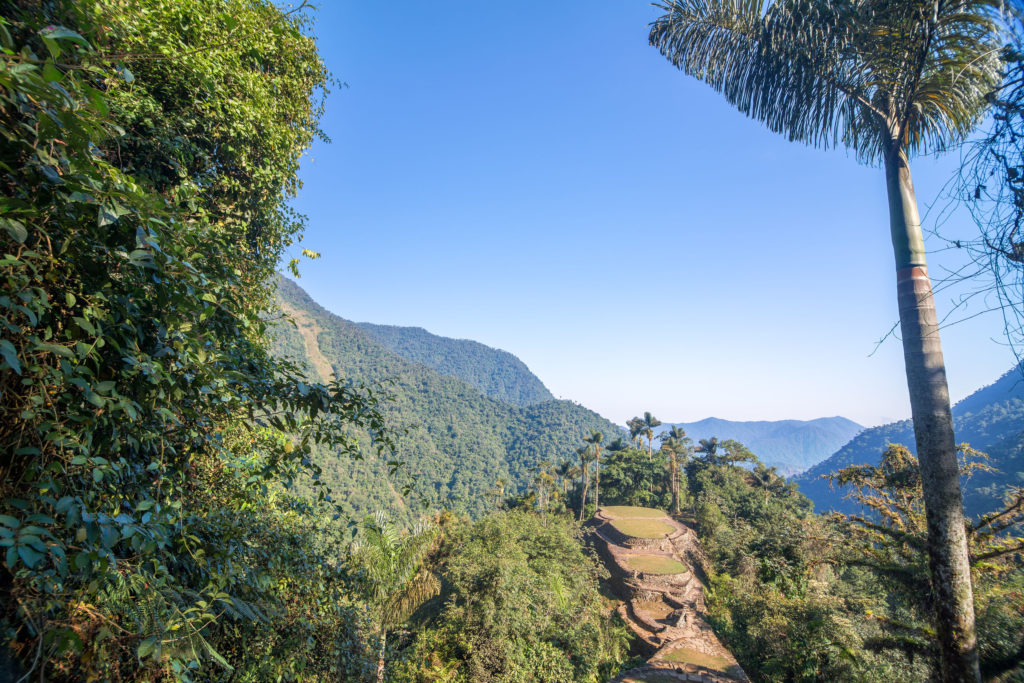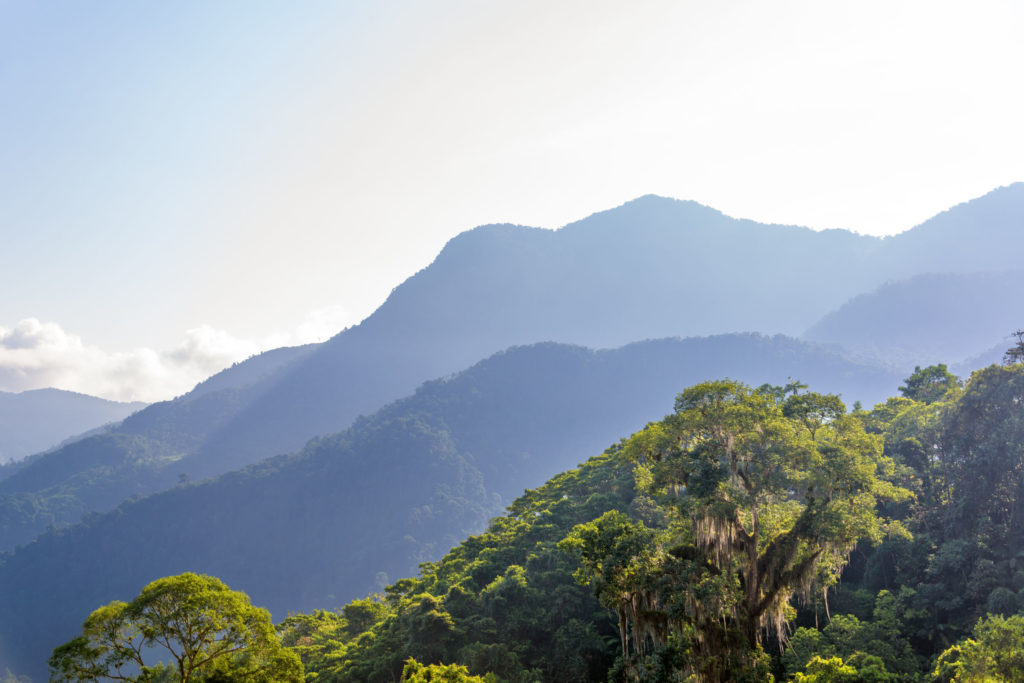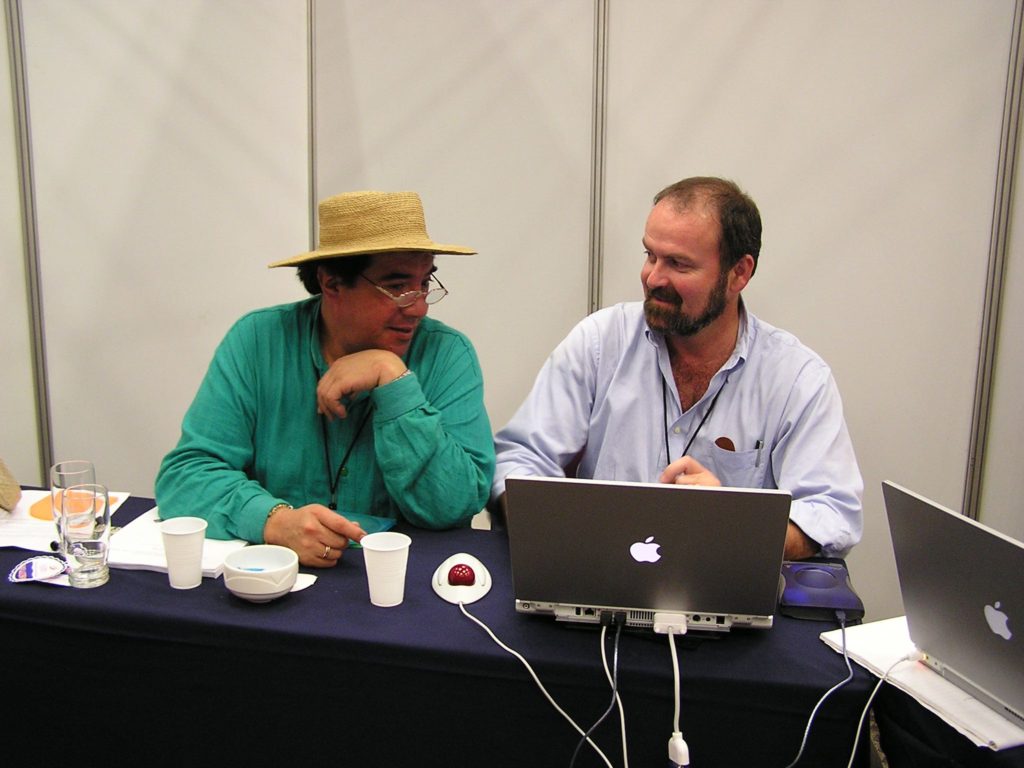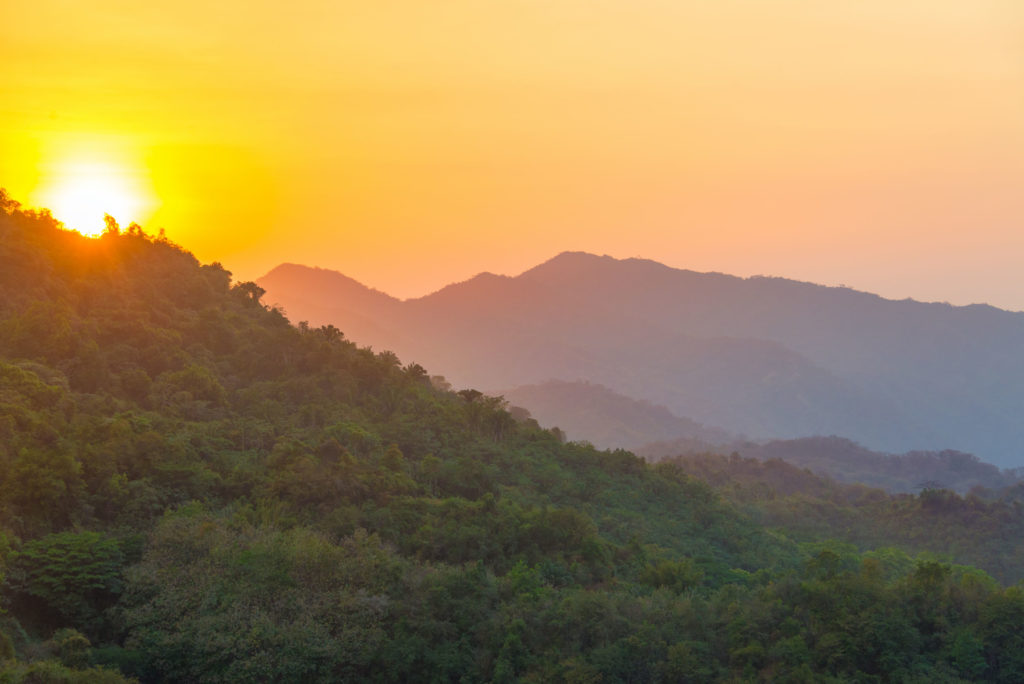Guillermo Rodríguez Navarro’s passion for conservation and resource management began when he was an undergraduate student at the Universidad de los Andes in Colombia. Although he pursued a degree in Industrial Engineering, he found his elective classes in archeology captivating. Guillermo combined these interests in his thesis, using statistical models to classify archeological pottery in Sierra Nevada Santa de Marta, Colombia.
QLF Experiences
Latin America/Caribbean Fellowship, 1997
Upon graduating, Guillermo pursued a master’s degree with Dr. Francois Marriott in Oxford, UK. Their research used GIS, simulations, and statistical models to understand how people have historically cultivated their environment(s) as a survival mechanism. After completing his master’s, Guillermo returned to Colombia as a Ph.D. candidate and worked on the Sierra Nevada de Santa Marta Archaeological Project.

The Lost City, or Ciudad Perdida, in the Sierra Nevada de Santa Marta mountain range in Colombia. Photograph by: Jesse Kraft
Guillermo remarks that the Sierra Nevada mountain range, located in Northern Colombia near the Caribbean Coast, is “one of the most fascinating developed archeological civilizations in Colombia.” The Sierra Nevada Project was established to preserve the natural landscape and the culture of its Indigenous people. This archeological project prospered for seven years until government funding was no longer available. At its conclusion, Guillermo founded the Fundación Pro-Sierra Nevada de Santa Marta (FPSN) in 1985 with a group of fellow environmentalists making it one of the first non-governmental organizations in Colombia. Once a member of the International Union for Conservation of Nature, Fundación gained international recognition and financial support from agencies including from The Nature Conservancy. FPSN holds one of the best documentation centers in Colombia specialized in Sierra Nevada de Santa Marta, employing GIS to create detailed maps of the area, and offers programs and internships that promote environmental conservation and heritage preservation in the Sierra Nevada.
The FPSN recognizes the deep spiritual connection between local Indigenous peoples and their land. For its Native peoples, Mother Earth is considered their God. They have always worked to keep the natural environment alive as a tribute to Mother Earth. Guillermo writes, The Kogi people sustain a world view that protects resources, regulates consumptive use of the land, and allows natural regeneration to occur. In their “history” every action surges from a natural force that comes from those ancient beings that are present in each element. Tribe members’ extensive knowledge of local plants and ecosystems is considered synonymous with religion and spirituality. When a wise person dies, the passing is perceived as “losing an encyclopedia.” Lessons can be derived from the Indigenous communities within the Sierras that have discovered unique ways of living in harmony with the natural environment. They can and should guide efforts of collaborative management for the sustainable development.

View of a jungle with hills in the background in the Sierra Nevada de Santa Marta in Colombia. Photograph by: Jesse Kraft
Over time, commercial farmers began cultivating the Sierra Nevada, forcing local tribes off their lands and plunging them into hardship. The FPSN has worked to support these marginalized peoples. With various forms of aid and financial assistance, the communities gained better access to education and improved quality of life. Documentary films on the Sierra Nevada heightened international awareness on the importance of heritage preservation, increasing the flow of further assistance to the region. Tribes also received sums of money from these films, such as Aluna. Today, Guillermo reports that these same Indigenous tribes are prospering! They have been able to use their funds to recover their territory by purchasing farms and property previously controlled by the government. Guillermo reflects that his team, “helped the Indigenous people gain strength and their Indigenous territory… I feel nowadays that if the Foundation is dying out, it is because we have completed our mission.”
The FPSN also acts as a mediator to ease tensions between the Colombian government and Indigenous peoples. Guillermo and his colleagues urge the government to recognize the importance of respecting Indigenous people’s culture and their homelands. Guillermo recalls one experience in which he and his team were travelling from the archaeological site in the north of Colombia, headed to a designated military base. A priest from a local tribe accompanied the group, wishing to buy a few supplies in the city. The priest and the FPSN members were waiting with other travelers on the heliport in the military base. When the military discovered the priest was with the assembly, officials discharged the FPSN. “The priest only wanted to buy needles, gunpowder, and some cotton thread. He worked hard to get the money by selling cows and chickens for ten years. All for nothing.” This story illustrates how strongly the government dissociates itself from the Indigenous people. Over the years, the FPSN has worked tirelessly alongside the tribes to eliminate this divide.

Guillermo Rodríguez (left) with QLF’s Brent Mitchell at the 2003 World Parks Congress in Durban, South Africa.
In 1997, Guillermo attended QLF’s Latin America/ Caribbean Fellowship, an intensive three-week program that discussed various conservation initiatives. There he was introduced to conservation “easements for perpetuity” or permanent rights to enter another’s property for conservation purposes. Securing these rights would secure FPSN’s conservation in perpetuity. Guillermo’s participation in the Fellowship profoundly influenced his professional career. “I learned all sorts of ways to generate [consciousness] about conservation,” he recalls. “It helped me a lot in the projects I was doing here [in the Sierra Nevada de Santa Marta] with the communities and our efforts to preserve and re-unite blocks of forests.” He forged connections with other QLF staff and Alumni, such as Jessica Brown (former QLF Senior Vice President) with whom he would later publish collaborative research. In 2005, Jessica and two other colleagues worked with Guillermo to publish The Protected Landscape Approach: Linking Nature, Culture and Community. Overall, his involvement in the Fellowship and his continued relationship with QLF’s Brent Mitchell, Senior Vice President, Stewardship, has provided him with shared knowledge of stewardship of natural resources and cultural heritage, which has in turn enhanced his work back home in Colombia.
Today, Guillermo still maintains office, attends meetings, and assists the current director of the Fundación Pro-Sierra Nevada de Santa Marta. However, he is also transitioning into a new stage in his life, teaching first grade through eleventh grade. “I’ve seen the difficulties that result when people that live here don’t connect to where they are,” he says. “I think it is good to start with children in primary and secondary schools and have them do projects with the Sierra Nevada. At least they will have the area they live in within the back of their minds. It’s a unique area. It is a reserve, its been appointed to be a natural heritage. I have dedicated my life to the Sierra Nevada. I at least want the kids to know about the area where they live.” By educating youth about the importance of conservation, Guillermo will continue to sustain his mission to conserve the Sierra Nevada landscape and its natural heritage.

Sun setting over lush green hills in the Sierra Nevada de Santa Marta mountain range in Colombia. Photograph by: Jesse Kraft






